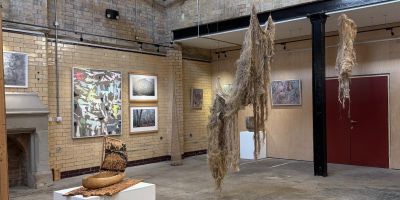Special Issue of Future Anterior Journal: Utopian Currents in Heritage – Call for Papers
Deadline March 2017
Elizabeth Stainforth (E.M.Stainforth@leeds.ac.uk)
Centre for Critical Studies in Museums, Galleries & Heritage, School of Fine Art, History of Art and Cultural Studies, University of Leeds
Deadline for submission: 1 March 2017
While the notion of heritage has been closely associated with continuity and preservation, recent theorizing in Critical Heritage Studies has argued that the very desire for continuity also requires and produces change. The definition of heritage as ‘a contemporary product shaped from history’ (Tunbridge & Ashworth 1996; see also Harvey 2002; 2010; Smith 2006; Harrison 2010) highlights the extent to which our relationship with the past is being continually re-configured. However, there is a future dimension implied in this relationship that is often neglected. To paraphrase William Morris, the future dimension in heritage testifies to the hopes and aspirations of those now passed away.
One way of considering heritage as future making is through the lens of ‘utopianism’, which is currently enjoying a resurgence in a number disciplines not least sociology (Levitas 1990; 2013), literary studies (Jameson 2005) and law and political theory (Cooper 2014). Given that William Morris, one of the founders of the late 19th century European heritage movement, was also a revolutionary socialist and writer of utopian fiction there is, as yet, unexploited scope in thinking heritage and utopia together.
Making the utopian, future-oriented aspects of heritage explicit is both an acknowledgement of the inevitability of change and an opening for thinking about the changes envisaged by former generations. In other words, heritage practices make it possible to diagnose a history of how people imagined the future might be. Heritage does not, therefore, only describe practices aimed at making a future in the image of the past and present, but can also be read as an attempt to think the world into being otherwise.
These logics of the future speak directly to alternative social and political imaginaries and raise questions for heritage. What are the political and temporal constituencies of slogans such as ‘forever, for everyone’ (UK National Trust)? What sorts of imaginaries might open up political potentials for heritage and have implications for decision-making processes? How are projected heritage scenarios shaped by current hopes and fears? And how might we draw out the utopian – and indeed dystopian – tendencies in different heritage practices?
This special issue of Future Anterior invites papers that explore the utopian currents in cultural heritage, in order to offer an alternative critical lens on debates about sustainability and historic preservation.
Possible topics include:
Heritage futures based on current architecture, art and preservation practices.
The social and political imaginaries involved in heritage practices and writing about heritage.
Logics of time and how buildings are employed in the negotiation of the past and the future within heritage studies (through, for example, conservation, interpretation, participation).
Diagnoses of utopian or dystopian currents in architectural heritage case studies.
Discussions of heritage in relation to the hopes/fears of particular groups or communities of people.
Examples of utopian interventions in historic buildings oriented towards change, or alternative heritage decision-making processes.
Articles submitted for peer review should be no more than 4000 words, with seven to ten illustrations. Text must be formatted in accordance with the Chicago Manual of Style, 15th Edition. All articles must be submitted in English, and spelling should follow American convention. All submissions must be submitted electronically. Text should be saved as Microsoft Word or RTF format, while accompanying images should be sent as TIFF files with a resolution of at least 300 dpi at 8 by 9 print size. Figures should be numbered clearly in the text. Image captions and credits must be included with submissions. It is the responsibility of the author to secure permissions for image use and pay any reproduction fees. A brief author biography (around 100 words) must accompany the text.




